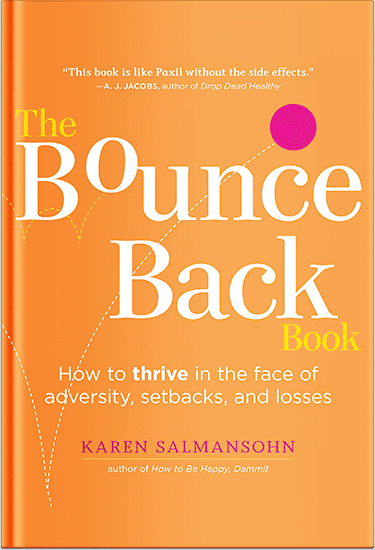 With numerous big brands vying for consumer attention, ensuring your products reach your target audience is essential for success. This is where Search Engine Optimization (SEO) comes into play. The article discusses practical SEO techniques for huge e-commerce firms to enhance sales and online presence.
With numerous big brands vying for consumer attention, ensuring your products reach your target audience is essential for success. This is where Search Engine Optimization (SEO) comes into play. The article discusses practical SEO techniques for huge e-commerce firms to enhance sales and online presence.
I’m writing this article because I am a bestselling author and entrepreneur with about 2 million books and courses sold globally.
Plus I created a program to help entrepreneurs to make money online.
It’s called Make Profitable Courses Without The Overwhelm.
I love to help people to live their most successful lives – so I put together this article about boosting sales – and I’m excited to share e-commerce SEO tips for large brands.
Understanding E-commerce SEO
SEO improves a website’s exposure on Google, Bing, and Yahoo. For e-commerce businesses, this means optimizing their online store to rank higher in search engine results, thereby attracting more organic traffic.
The key components of e-commerce SEO include keyword research, on-page optimization, technical SEO, and off-page SEO.
Keyword Research and Analysis
E-commerce SEO involves numerous key elements that boost a website’s SERP presence and organic traffic.
Keyword Research and Analysis
An effective e-commerce SEO plan starts with keyword research. Google Keyword Planner and SEMrush can help find high-intent keywords, but other aspects must be considered.
Long-Tail Keywords
In addition to targeting broad keywords, focusing on long-tail keywords can help capture more specific search queries and attract highly relevant traffic. Long-tail keywords often have lower competition and higher conversion rates, making them valuable for e-commerce websites.
Semantic Keyword Analysis
Understanding the semantic context of keywords can further refine your targeting strategy. Semantic analysis involves identifying related terms, synonyms, and variations of your primary keywords to optimize content comprehensively.
User Intent
Analyzing user intent behind search queries is crucial for aligning your keyword strategy with the needs and expectations of your target audience. Consider the informational, navigational, and transactional intent behind keywords to tailor your content accordingly.
On-Page Optimization
You need on-page optimization to optimize your website’s pages for search engines and users. Product titles, descriptions, and metadata are essential for on-page SEO, but there are other factors.
Content Quality
Beyond keyword placement, prioritize creating high-quality, informative content that addresses the needs and interests of your target audience. Valuable content not only improves search engine rankings but also enhances user experience and encourages engagement.
Internal Linking
Incorporating internal links within your website’s content can help distribute link equity, improve navigation, and strengthen the overall site structure. Strategic internal linking can also facilitate the flow of PageRank to important pages, boosting their visibility in search results.
Rich Snippets
Implementing structured data markup to generate rich snippets in SERPs can enhance the visibility and click-through rates of your listings. Rich snippets provide users with additional information directly in search results, such as product prices, ratings, and availability.
Technical SEO
To increase crawlability, indexability, and performance, technical SEO optimizes your website.
Site Architecture
Well-structured websites make navigating easy for users and search engines. Organize your site hierarchy logically, using categories, subcategories, and internal linking to establish a clear path for users to navigate through your products and content.
Canonicalization
Canonical tags are used to consolidate duplicate or similar content variations into a single, preferred version, preventing potential issues with duplicate content penalties and dilution of link equity. Implement canonical tags consistently to ensure that search engines prioritize the most relevant pages for indexing and ranking.
Hreflang Tags
For e-commerce websites targeting international audiences, hreflang tags help indicate language and regional variations of content to search engines. Implementing hreflang tags correctly can improve the visibility of localized versions of your website in relevant search results and enhance the user experience for global users.
Off-Page SEO
Off-page SEO focuses on activities and strategies implemented outside of your website to improve its authority, relevance, and trustworthiness in the eyes of search engines.
Social Signals
While not a direct ranking factor, social signals such as likes, shares, and comments can indirectly influence search engine rankings by increasing brand visibility, driving traffic, and generating engagement. Maintain an active presence on social media platforms to amplify your content and attract potential backlinks.
Brand Mentions
Beyond traditional backlinks, brand mentions or citations across the web can contribute to your website’s authority and relevance. Monitor online mentions of your brand and products, and proactively engage with relevant communities, forums, and industry influencers to foster brand recognition and earn valuable citations.
Local SEO Integration
For e-commerce brands with physical store locations or regional targeting, integrating local SEO strategies is essential for capturing local search traffic and driving foot traffic to brick-and-mortar stores. Optimize your Google My Business listing, local citations, and location-based keywords to improve local search visibility.
Advanced SEO Strategies for Large E-commerce Brands
While the basics of SEO lay a solid foundation, large e-commerce brands can further elevate their online presence with advanced strategies tailored to their specific needs.
Voice Search Optimization
With the rising popularity of voice search devices like Alexa and Google Assistant, optimizing for voice search has become increasingly important. Tailoring product listings and content to match natural language queries can improve your chances of appearing in voice search results.
Local SEO for Brick-and-Mortar Stores
For large e-commerce brands with physical store locations, optimizing for local search is crucial. This involves claiming and optimizing Google My Business listings, ensuring accurate business information across online directories, and encouraging customer reviews.
Semantic SEO and Structured Data
Semantic SEO prioritizes user intent and appropriate search results. Implementing structured data markup on your website helps search engines better understand the content and context of your products, leading to improved visibility in search results.
Content Syndication and Distribution
Syndicating information across platforms and channels expands your audience. Partnering with other websites and content-sharing platforms can amplify your content’s reach and drive more traffic to your e-commerce site.
Driving E-commerce SEO Tips for Success: Adapt, Innovate, Thrive!
In addition to this guide’s detailed tactics, e-commerce SEO is always changing. Staying flexible and knowledgeable as search engine algorithms and user behaviors change is crucial to long-term success. To be competitive today, follow industry trends, partner with experts ecommerce seo, and explore new strategies.
Get More Online Marketing Secrets
Explore my digital program: Make Profitable Courses Without The Overwhelm.
P.S. Before you zip off to your next Internet pit stop, check out these 2 game changers below - that could dramatically upscale your life.
1. Check Out My Book On Enjoying A Well-Lived Life: It’s called "Your To Die For Life: How to Maximize Joy and Minimize Regret Before Your Time Runs Out." Think of it as your life’s manual to cranking up the volume on joy, meaning, and connection. Learn more here.
2. Life Review Therapy - What if you could get a clear picture of where you are versus where you want to be, and find out exactly why you’re not there yet? That’s what Life Review Therapy is all about.. If you’re serious about transforming your life, let’s talk. Learn more HERE.
Think happier. Think calmer.
Think about subscribing for free weekly tools here.
No SPAM, ever! Read the Privacy Policy for more information.
One last step!
Please go to your inbox and click the confirmation link we just emailed you so you can start to get your free weekly NotSalmon Happiness Tools! Plus, you’ll immediately receive a chunklette of Karen’s bestselling Bounce Back Book!


 With numerous big brands vying for consumer attention, ensuring your products reach your target audience is essential for success. This is where Search Engine Optimization (SEO) comes into play. The article discusses practical SEO techniques for huge e-commerce firms to enhance sales and online presence.
With numerous big brands vying for consumer attention, ensuring your products reach your target audience is essential for success. This is where Search Engine Optimization (SEO) comes into play. The article discusses practical SEO techniques for huge e-commerce firms to enhance sales and online presence.